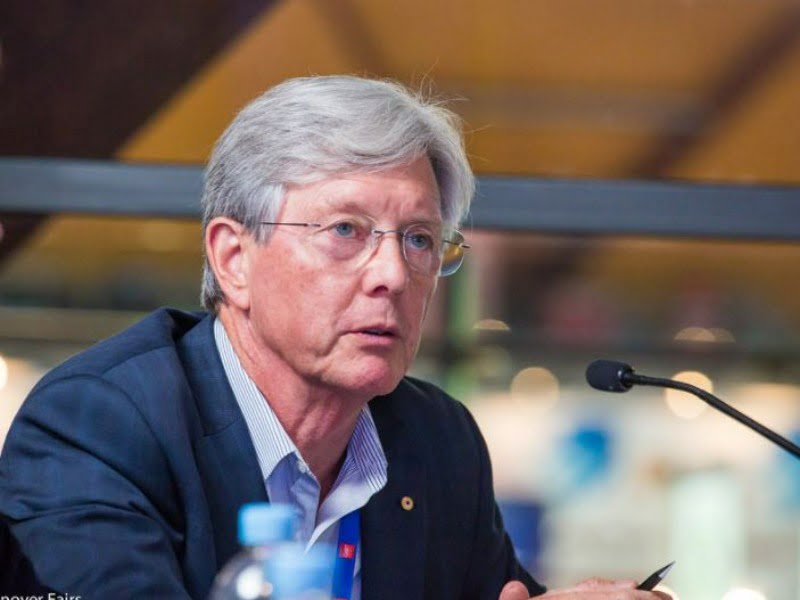Legendary Australian scientist and deep tech entrepreneur David Skellern, a member of the original team that built the world’s first WiFi chipset, has been appointed as chair of the CSIRO’s promising space data startup Quasar Satellite Technology.
The venture capital backed QuasarSat was founded in early 2021 with $8.6 million in seed funding to develop commercial applications for the CSIRO’s Phased Array technology, developed as a part of the Australian Square Kilometre Array Pathfinder (ASKAP) project.
The initial commercial application of the technology being pursued by QuasarSat is for a “ground station-as-a-service” offering whereby the company would support secure two-way communications to potentially hundreds of satellites via a single antenna.
With more than 50,000 satellites expected to be launched in the next decade, the company aims to fundamentally disrupt the way that fleets of satellites are operated, and how space data is managed.

Dr Skellern, who describes the technology as “truly outstanding … absolutely world-leading” says QuasarSat is a multi-billion-dollar company opportunity for Australia.
The world has turned full circle for the former radio astronomist. As a Macquarie University research, Dr Skellern worked in an integrated CSIRO-Macquarie team working on the wireless local area network research funded by the national science agency that led to WiFi (and tens of millions of dollars in royalties being returned to CSIRO).
In 1997, Dr Skellern co-founded Radiata with research partner Dr Neil Weste to commercialise CSIRO and Macquarie’s world-leading wireless LAN research. Four years later, in 2001, Radiata was sold to networking giant Cisco for US$565 million.
The lineage of the technology being commercialised by QuasarSat includes substantial foundational elements that were developed during that fertile period of wireless LAN research.
QuasarSat is something of an odd duck as a sovereign Australian space company. It’s equity partners include CSIRO, deep tech venture capital firm Main Sequence and four Australian industry partners: Clearbox Systems, Fleet Space, Saber Astronautics and Vocus Communications.
QuasarSat chief executive Phil Ridley is also an equity holder, while the NSW Office of the Chief Scientist tipped in $1.9 million as a forgivable loan (meaning it will get paid back if the company does well).
Just like Dr Skellern’s WiFi pioneer Radiata when it first set up, the Quasar team is situated at the CSIRO Marsfield site and integrated with its astronomy and information technology researchers.
Dr Skellern has not been a passive observer of the commercial development of the Phased Array technology. He is currently in the final year of a five-year appointment as chair of Australian Telescope Steering Committee, a CSIRO committee appointed by its board of directors.
In the first couple of years of his tenure on that board – a period of great progress at the ASKAP project in which a great deal of new-to-the-world tech was developed – the committee recommended that CSIRO appoint a full-time deep tech specialist to assess the technology for potential use in commercial applications.
That led to the appointment of astrophysicist Dr Ilana Feain – now a QuasarSat board member – and a focus on the Phased Array tech.
“So, my involvement has been from the outset on this, and as an agitator who has tried to get some technology from radio astronomy research to be taken to the [commercial] market, I am really chuffed about continuing along that road,” Dr Skellern told InnovationAus.
The QuasarSat verture is not modelled on the prior Radiata success, but in these early stages it is an eerily similar story.
“CSIRO was really supportive of us [Dr Skellern and Dr Weste] when we took that technology out, and gave us a lot of assistance. We paid for a lot of it, but they made the right people available when we needed assistance with work they had actually done,” Dr Skellern said.
“We worked very closely with them as really an integrated team with the CSIRO team. We had interactions with them pretty much every day.
“So it was a pretty tightly coupled arrangement. And when we first started, we actually rented [space] from CSIRO, on the CSIRO Marsfield site,” he said. “And that’s exactly what Quasar is doing. Its early staff are working in the Marsfield site, right next door to the [CSIRO] people building the Phased Array antennas.”
When he was working on wireless LAN tech in the Radiata days, Dr Skellern says Australia’s research was “a couple of years” ahead of overseas contemporaries – and that made all the difference.
“In this case [QuasarSat], my guess is that they again have a pretty significant lead on the rest of the world,” he says.
“But there’s no time to waste. There is a lot of work to be done and you can imagine that we are not the only ones looking at this area now.”
Dr Skellern also chairs the RoZetta Institute (formerly the Capital Markets CRC), and remains an Adjunct Professor at Macquarie University and Visiting Professor at the Imperial College London.
He is a former CEO of National ICT Australia (NICTA) the national data sciences research centre that was later merged into CSIRO to become the Data61 business unit.
Do you know more? Contact James Riley via Email.

